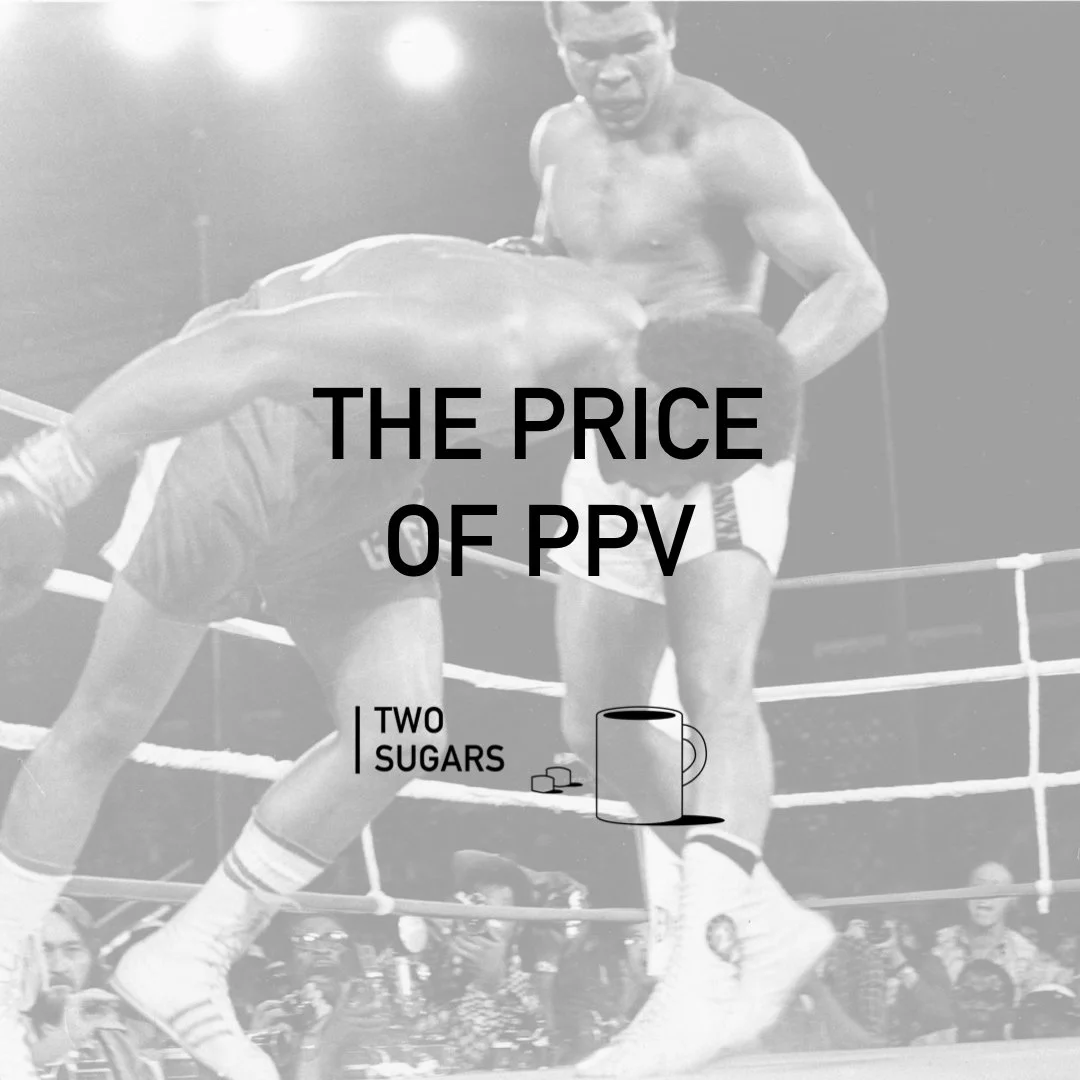THE PRICe OF PPV
On the 30th of October 1974 Mohammed Ali and George Forman were finally ready to get it on.
The Rumble in the Jungle was the most anticipated fight of all time
They didn’t get into the ring until 4:30 am local time in Zaire
About 10:30pm in America
In 1974 fights weren’t shown on cable TV
They were shown on closed circuit television
Otherwise known as theatre TV
Cinemas and other venues would buy the feed
And sell tickets for people to come and watch live
So no matter your home set up, you could watch the fight
The fight was also sold to free TV stations outside of the US
The Rumble in the Jungle is one of the greatest fights of all time
Ali upsetting the odds and winning in the 8th round
It was also the biggest tv event of all time
Watched by a billion people around the world
That’s one in four people alive
The appeal of boxing was never greater than on the night of the Rumble
It was also the peak of the CCTV era of selling fights
50 million Americans paid to see that fight in theatres around the country
Seven years later the theatre TV era ended and the pay per view era began
This is the boxing era we’re still in now
Promoters and TV companies sell fights directly to fans through their TV subscriptions
Sounds smart, going direct to the fans
But it leaves a huge amount of people unable to buy the fights
Without the right subscriptions, technology or enough money
With the switch from the theatre TV era to the PPV era
Boxing moved from a growth strategy to a loyalty strategy
Hiding their best talent behind paywalls and restricting access to existing fans
Prioritising squeezing more from die-hards
Over bringing in new comers
The biggest pay per view fight of all time was Mayweather against Paquiao in 2015
They sold 5m pay per views
And they are two of most famous boxers of all time
In 2021 the biggest selling fight was Fury against Wilder
They sold around 600K pay per views
At the time of the Rumble in the Jungle boxing was a top 3 sport globally
It would now be lucky to be in the top 10
That’s the danger of pursuing loyalty over growth

